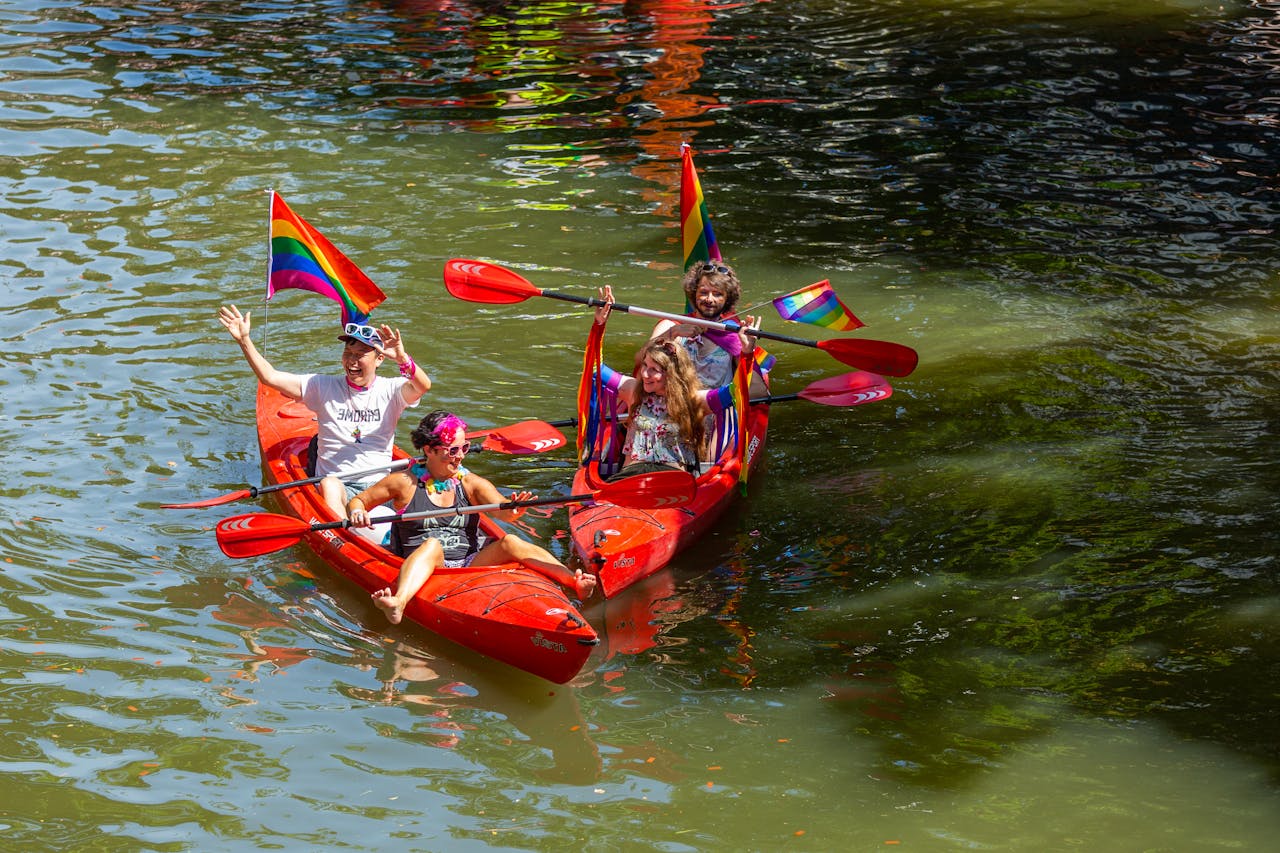Kayaking and canoeing are exciting ways to explore the great outdoors, combining adventure, fitness, and the serenity of nature. Whether you’re paddling down a calm river or navigating thrilling rapids, these water sports offer something for everyone. If you’re wondering how to get started with kayaking and canoeing, this guide will walk you through the essentials—from equipment to safety tips—to ensure a smooth and enjoyable experience.
What’s the Difference Between Kayaking and Canoeing?
While kayaking and canoeing share similarities, they have distinct differences in equipment and techniques:
- Kayaking: Kayaks are low-sitting, enclosed boats propelled using a double-bladed paddle. They are great for solo or tandem trips and often used in activities like touring, whitewater adventures, and sea exploration.
- Canoeing: Canoes are open-top boats where paddlers sit on benches and use a single-bladed paddle. They’re typically used for recreational outings, fishing, or longer expeditions.
Understanding these differences will help you choose the right activity for your interests and skill level.
Essential Gear for Kayaking and Canoeing
Before hitting the water, it’s important to equip yourself with the right gear. Here’s what you’ll need:
Kayaking Essentials:
- Kayak: Choose a kayak based on your planned activity (e.g., recreational, touring, or whitewater kayaking).
- Paddle: Opt for a lightweight paddle with the correct length for your height.
- Life Jacket (PFD): A properly fitted personal flotation device is mandatory for safety.
- Spray Skirt: For closed-deck kayaks, this accessory keeps water out.
Canoeing Essentials:
- Canoe: Select a canoe suitable for your activity, whether solo paddling or group expeditions.
- Paddle: A single-bladed paddle is standard for canoeing.
- Dry Bags: To keep valuables and gear safe from water exposure.
Both activities also require appropriate clothing, such as quick-drying or waterproof layers, and safety equipment like whistles and helmets.
How to Get Started with Kayaking and Canoeing
1. Choose the Right Location
As a beginner, it’s best to start on calm, flat water, such as lakes or slow-moving rivers. These environments allow you to practice paddling and steering without the added challenge of waves or currents.
2. Learn Basic Techniques
- Kayaking: Focus on forward strokes for propulsion, backward strokes for braking, and sweep strokes for turning.
- Canoeing: Master the J-stroke for efficient paddling and directional control.
Taking a beginner’s course is a great way to build confidence and learn proper techniques from certified instructors.
3. Prioritize Safety
Safety is paramount when engaging in water sports. Follow these tips to stay safe:
- Always wear a life jacket.
- Check weather and water conditions before heading out.
- Inform someone about your plans, including your location and expected return time.
- Carry a first aid kit and a whistle.
The National Park Service offers detailed advice on water safety and regulations for kayaking and canoeing in protected areas.
Benefits of Kayaking and Canoeing
Engaging in kayaking and canoeing comes with numerous physical, mental, and social benefits:
- Physical Fitness: Both activities are excellent for building upper body strength, improving cardiovascular health, and enhancing core stability.
- Mental Well-being: The soothing sounds of water and the beauty of nature can reduce stress and boost mental clarity.
- Connection with Nature: Paddling offers an up-close view of wildlife and scenic landscapes, fostering a deeper appreciation for the environment.
- Social Bonding: Whether paddling solo or in a group, these sports encourage teamwork and shared experiences.
Common Challenges and How to Overcome Them
1. Fear of Capsizing
Capsizing is a common concern for beginners. Practice wet exits (for kayaks) and learn recovery techniques to build confidence.
2. Navigational Difficulties
Using landmarks or a GPS device can help you stay oriented, especially in larger bodies of water.
3. Physical Fatigue
Start with shorter trips to build stamina gradually. Stay hydrated and take breaks as needed.
Conclusion
Kayaking and canoeing offer endless opportunities for adventure, fitness, and relaxation. By equipping yourself with the right gear, learning essential techniques, and prioritizing safety, you’ll be well on your way to enjoying these rewarding water sports. Whether you’re navigating a peaceful lake or embarking on a river journey, the joys of paddling await.
For those ready to take the plunge, consider exploring local paddling clubs or classes to connect with experienced enthusiasts. With a bit of practice, you’ll soon find yourself gliding confidently across the water, discovering the wonders of kayaking and canoeing.

